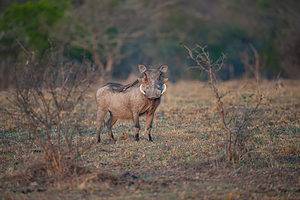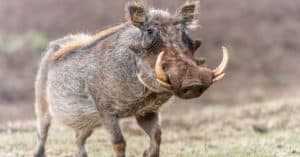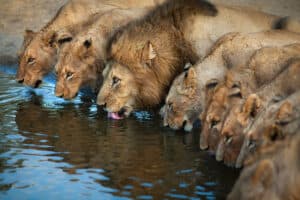Both panthers and mountain lions are animals with confusing etymology. The name panther can refer to any of the “big cats” but is most often used to refer to leopards and jaguars with black fur. Mountain lions are alternatively called pumas and cougars. So, before we look at the idea of how to differentiate a panther vs mountain lion, we have to define what animals we’re talking about.
Mountain lions are best compared to jaguars, the larger of the most common big cats to which their name refers. So, we’re going to compare the larger of the big cats that the term panther refers to, jaguars, to mountain lions. Let us show you the vast difference between these mammals!
Comparing a Panther and a Mountain Lion
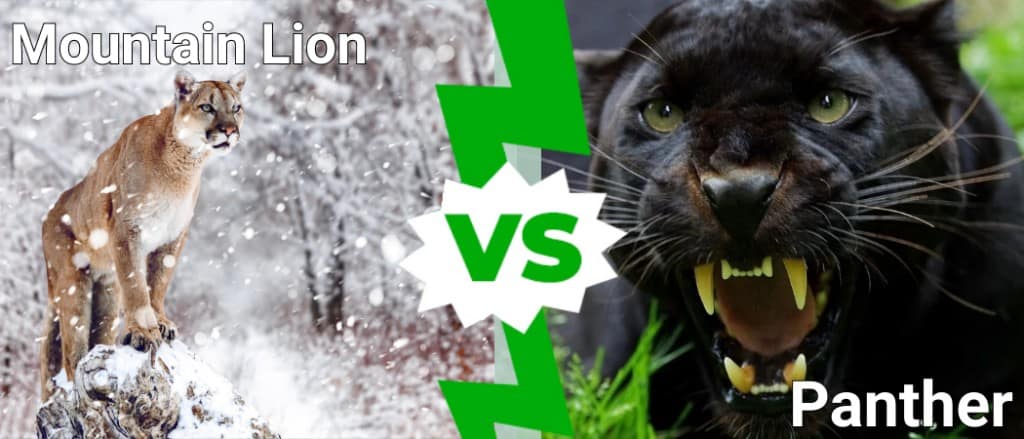
| Panther | Mountain Lion | |
| Size | Weight: 79lbs-300lbs Height: 24in-30in at the shoulder Length: 43in-96in | Weight: 64lbs-198lbs Height: 24in-36in at the shoulder Length: 72in-96in |
| Defined species | No, their name is assigned to jaguars and leopards alike | Yes, refers to Puma concolor and subspecies like the Puma concolor cougar |
| Color | Melanistic with typical patterns visible when up close | Tawny brown with a lighter, cream color on their stomach and chest. |
| Location | – Leopard black panthers live in Africa and Asia – Black jaguars live in the Americas | The Americas, but the South American variant is a subspecies called Puma concolor concolor |
| Roars | Can roar much like other big cats | Cannot roar, but will growl, shriek, and purr |
The Key Differences Between Panther vs Mountain Lion
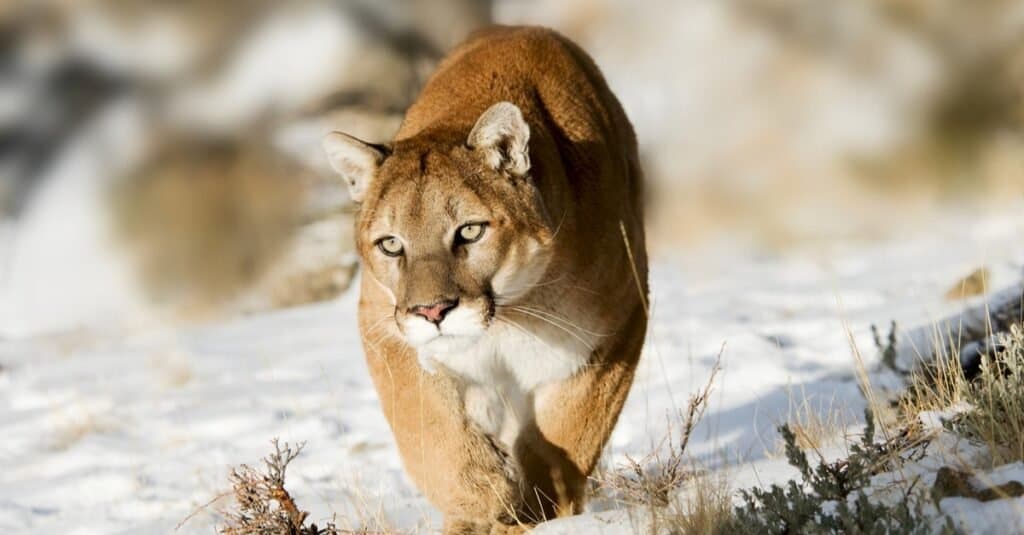
Mountain lions
are easy to distinguish from panthers by color alone
©Scott E Read/Shutterstock.com
The greatest differences between a panther and a mountain lion include their size and color. The jaguar variant of the black panther is larger than the mountain lion in terms of weight and musculature, but they are roughly the same height and length as mountain lions.
Also, mountain lions are a tawny brown with a cream-colored underside. Panthers are melanistic variants of two cats: leopards and jaguars. Both of those mammals have distinctive patterns on their body. Depending on the level of darkness that is achieved by the panther’s fur coat, these rosette patterns may be distinct enough to see, or they might be completely blacked out.
These are the greatest differences between panthers and mountain lions. However, other ways to distinguish these creatures exist, and we’re going to explore them in greater detail.
Panther vs Mountain Lion: Size
Panthers are larger than mountain lions in most cases. Although the animals may have similar maximum lengths and heights, panthers weigh more due to their musculature. Panthers are stronger than mountain lions and can pack on over 100lbs more than them. Still, size is an ineffective way to tell these animals apart.
Panther vs Mountain Lion: Defined Species
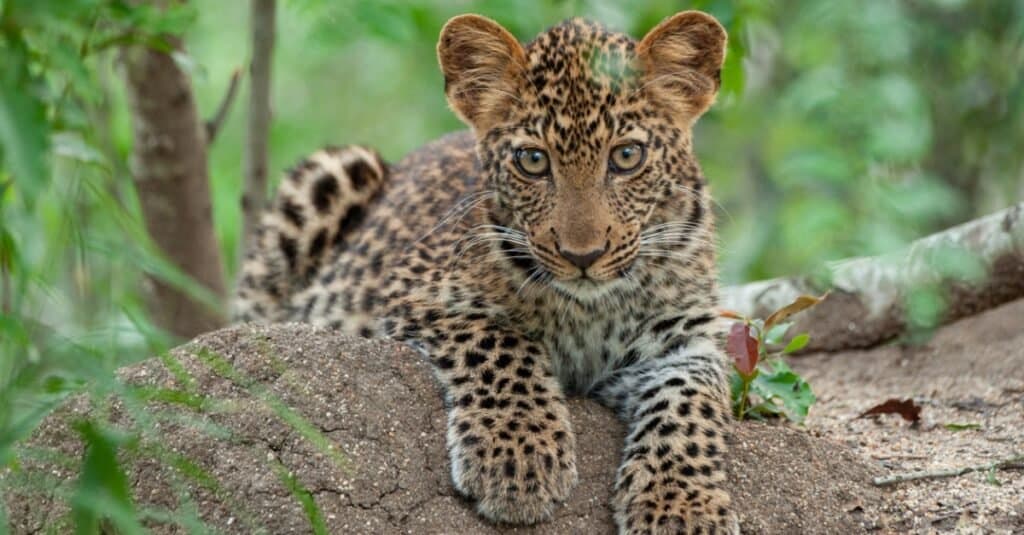
Panthers are melanistic variants of leopards and jaguars
©iStock.com/RudiHulshof
The term panther does not refer to a specific species, but “mountain lion” does. Panther is a term that is often applied to leopards, jaguars, and sometimes even mountain lions in the case of the Florida panther and Carolina panther. Thus, panther is a very broad term.
The name “mountain lion” is not exactly precise either, but it refers to a single animal that has multiple names. The most common name for these mammals is cougar, but they’re also called pumas and Nittany lions. All of these animals belong to the species Puma concolor or any of their subspecies, especially those recognized in South America.
The Puma concolor concolor is also called the South American cougar or Andean Mountain lion, and they live only in South America, and they are smaller than their northern cousins.
Panther vs Mountain Lion: Color
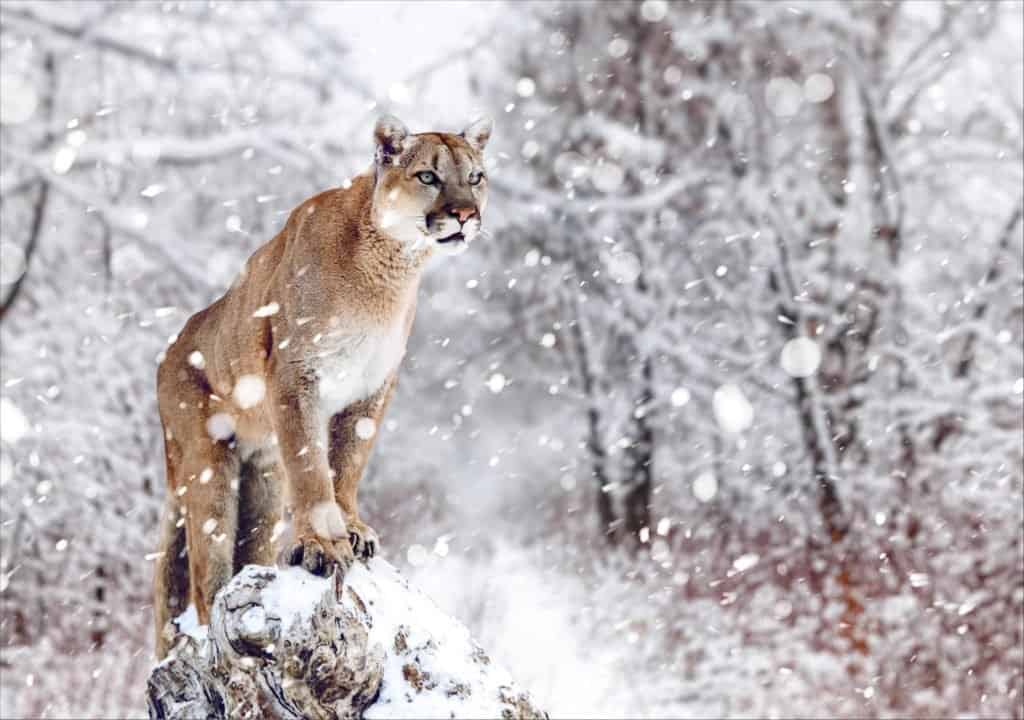
Mountain lions are usually brown, red, and cream colors
©Unknown/Shutterstock.com
Panthers are black and mountain lions are tawny brown with cream stomachs, chests, and necks. The reason that panther became the most common term for leopards and jaguars is because both creatures have a melanistic variant that causes them to be black.
Thus, black panthers are leopards or jaguars that have completely black fur with such faint rosettes that they’re non-existent to the human eye. Otherwise, they are mostly black, but you can still make out the rosettes when light is shining on the creatures.
Mountain lions have fur that is tawny, reddish, and cream-colored. The light can make their fur look lighter or darker, more of a gray than brown. If you see either of these creatures, you can tell them apart by their fur almost immediately.
Panther vs Mountain Lion: Location
Mountain lions live in North America, Central America, and South America, and panthers live in Africa, Asia, Central America, and South America. If we include mountain lions under the umbrella term of panthers, then they will technically live in North America as well.
Black panthers that are actually leopards live in Africa and Asia. However, panthers that are jaguars or mountain lions live throughout the Americas. Thus, if you are in North America or South America, you are going to see mountain lions and panthers, but you probably won’t see mountain lions in Europe, Africa, and Asia.
Panther vs Mountain Lion: Roar
Panthers, specifically jaguars, are going to roar like the other big cats, but mountain lions cannot roar. That doesn’t mean they cannot vocalize and give you a very clear message to back off. Mountain lions can growl, purr, and shriek. In fact, their shriek is so loud and terrifying that it’s confused for a person in pain or, in some cases, spirits.
Either way, if you hear any of these animals roaring, growling, or shrieking but you can’t see them, it’s time for you to pack up and leave the area. These are expert hunters, and they have no qualms about attacking humans that are in their territory.
Panther vs Mountain Lion: Who Would Win in a Fight?
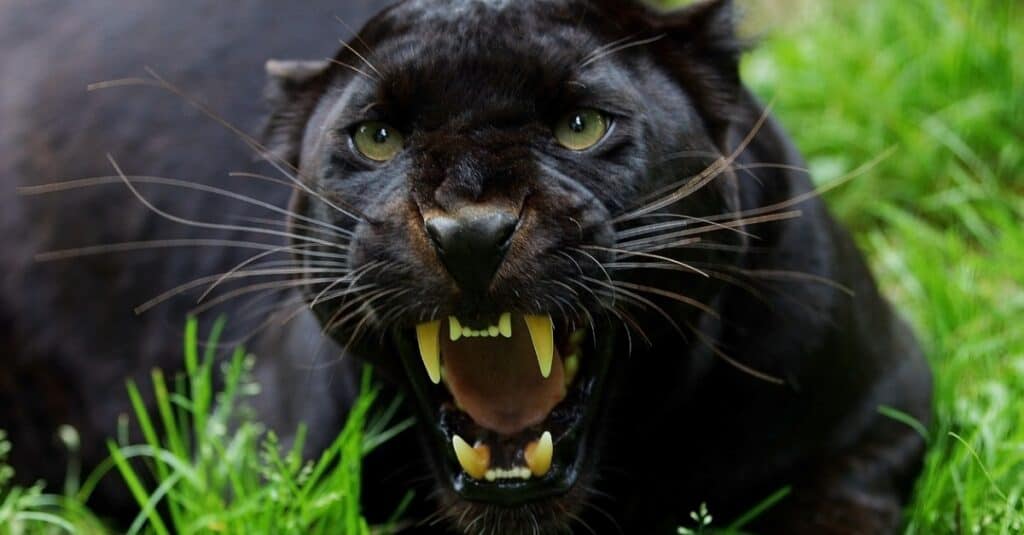
Black panthers are stronger and deadlier than mountain lions
©iStock.com/slowmotiongli
A panther would win a fight against a mountain lion. The jaguar variant is larger than a mountain lion on average, has better hunting capabilities, and can completely blend in a dark environment. These creatures are known for quickly and silently putting an end to their prey. With their strong bites, deadly claws, and ambush capabilities, it’s hard to imagine that a mountain lion would win. Of course, the panther would not come away unscathed since mountain lions are still tough fighters.
Panthers and mountain lions are big cats that still roam many places around the world today. They’re both dangerous creatures with names that spawn a lot of confusion. Now, you can tell them apart with ease!
What are the Odds of Being Attacked by a Mountain Lion?
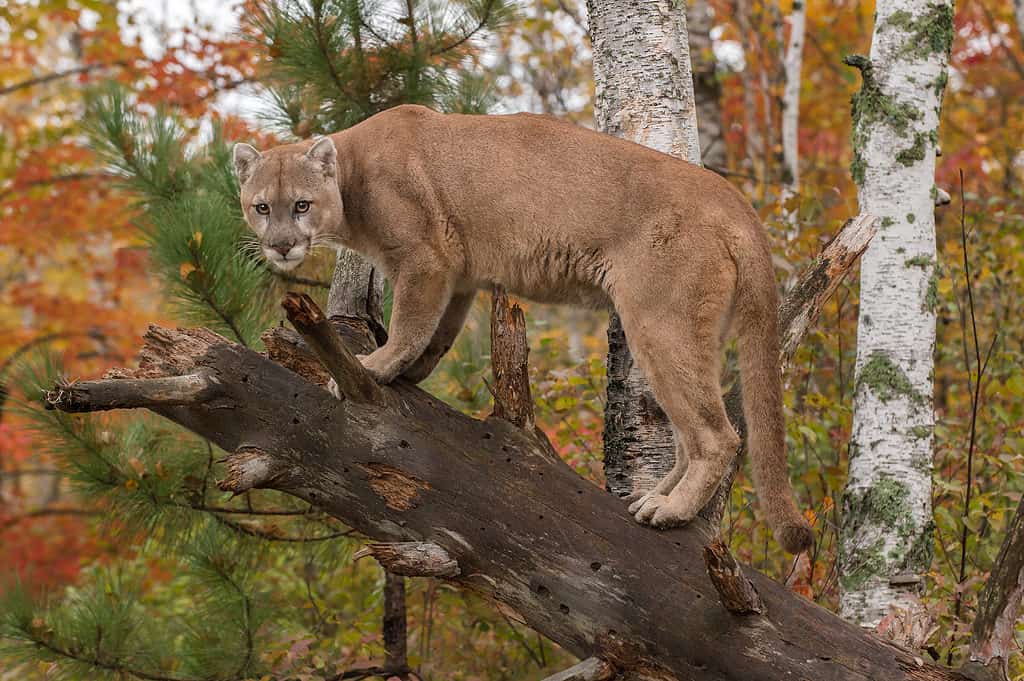
While mountain lions have been responsible for human fatalities, the odds of it happening to you are about 1 in 1 billion.
©Geoffrey Kuchera/Shutterstock.com
For humans, there is always a concern when it comes to encountering a wild animal in its natural habitat, or elsewhere if one happens to stray into urban areas. Unfortunately, cougars have been known to attack humans and are responsible for some fatalities. However, the number of documented attacks in the U.S. in the last 100 years is 126, of which only 27 were fatal. Those attacks break down by decade/period as follows:
- 1868-1953– 9 deaths
- 1970’s– 3 deaths (all children 12 & under)
- 1980’s– 3 deaths (all children 12 & under)
- 1990’s– 7 deaths
- 2000’s– 3 deaths
- 2010’s–2 deaths
Of these deaths, many occurred in remote areas where a person was hiking, biking, on a camping trip, or even riding horseback. Multiple deaths were young children, who would be more vulnerable to a mountain lion due to their smaller size. Many of the victims were eaten.
However, as horrifying as it sounds, if you look at the fact that in the last 25 years, there have been less than 20 deaths from mountain lions. When comparing the average population to the known occurrences, the odds of being killed by a mountain lion would be roughly 1 in 1 billion.
The photo featured at the top of this post is © sergeyle le/Shutterstock.com
Thank you for reading! Have some feedback for us? Contact the AZ Animals editorial team.



